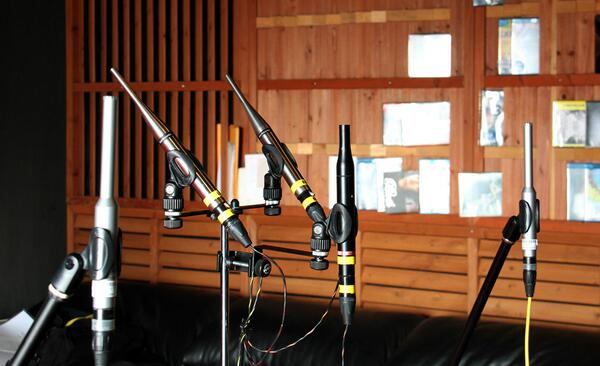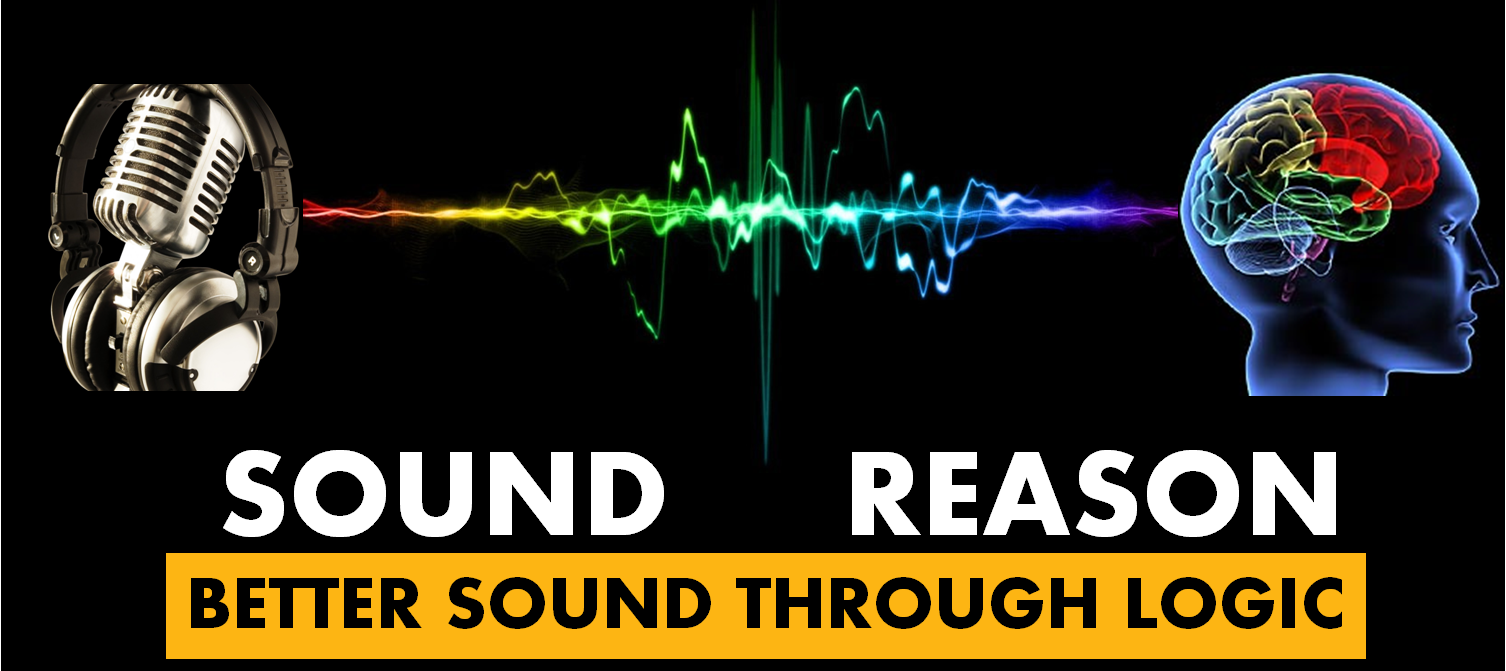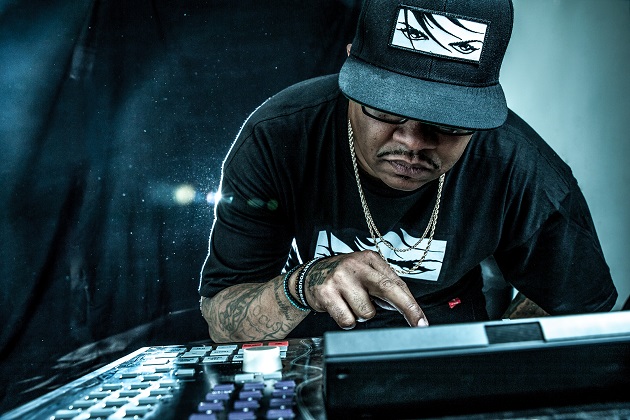 I’ve always feel very honored and privileged when I get asked to participate at a conference as a panelist of any kind where I can help people get a better understand of sound in any way. In September 2013 I was asked to join the sound engineering panel at the Bay Area Producers Conference. While I have training and experience in studio recording and mixing, I found that there were other aspects of the sound industry that appealed to me more. Sitting on the panel that day I found myself surrounded by recording experts, even a Grammy winner. So I thought to myself, what can I tell these aspiring producers in the crowd that might be something that these engineers might overlook? In the last 5 years the focus of my career has been on sound system design and implementation, and that was when it occurred to me that these people in the audience probably are so focused on getting the perfect mix of their tracks that they might not even think about where they are when working on the mix.
I’ve always feel very honored and privileged when I get asked to participate at a conference as a panelist of any kind where I can help people get a better understand of sound in any way. In September 2013 I was asked to join the sound engineering panel at the Bay Area Producers Conference. While I have training and experience in studio recording and mixing, I found that there were other aspects of the sound industry that appealed to me more. Sitting on the panel that day I found myself surrounded by recording experts, even a Grammy winner. So I thought to myself, what can I tell these aspiring producers in the crowd that might be something that these engineers might overlook? In the last 5 years the focus of my career has been on sound system design and implementation, and that was when it occurred to me that these people in the audience probably are so focused on getting the perfect mix of their tracks that they might not even think about where they are when working on the mix.
As a live sound engineer working at the Front of House position, trying to create a mix of the on stage instruments you have to make sure you understand what the room itself is doing to change and manipulate the sound. Are there heavy drapes that are being used to absorb low frequency? Is there a lot of glass or stone that will be reflecting sounds throughout the room? And what frequencies are being affected by the architecture or interior design decisions? You have to understand how the room is coloring the sound from the speakers to make sure that you are hearing the sound the way you are creating it in your mix, and not the way the room is changing it once it comes out of your speakers.
In home studios many times people look at online guides to get the best acoustic treatments for bass trapping, absorption and diffusion. This is always a great start to help deaden the mixing space, but so many of these people didn’t take the proper measurements before they installed them to know if they were placed correctly in the room or even if they were required at all. Remember, one person’s bass deficiency is another’s over abundance of mid-range.
There are some very expensive tools to perform the measurement operations, but my personal favorite inexpensive tool that gets the job done is the Studio Six Digital microphone and app for iPhone or iPad. It will cost you a few hundred dollars but will give you the fundamentals required to help balance out your room.
When doing these measurements there are a few things that you should not forget:
- Take a measurement in various locations around the room. When you’re mixing you will be, ideally, sitting in the sweet spot, but that doesn’t mean that anyone you will be playing the track for will be. Once you’ve taken measurements in various locations you will have a better idea where certain frequencies are nodal or cancelled out by reflections.
- Have outboard EQ available for your speakers where you can ensure that they are reproducing 20 Hz to 20 kHz reliably. It’s a personal preference to keep this off the DAW, but by having it as an external piece of hardware you can make sure that the settings are fixed and will never be lost by a computer crash.
- Don’t forget to make sure that your speakers are in phase. This is a measureable thing, and vital when working in a home studio.
- If you make any changes to the room take another measurement. It might seem silly to do this if you just shifted something 6 inches one way or another but because sound is a wave any change in the surfaces it moves across will affect it, and you should know exactly what that affect was.
- In addition to using pink noise, take a measurement using a track you’re familiar with. This is a neat way to find out just how sensitive your ears are in comparison to a balanced microphone. Is the microphone picking up things that your ears are not? What exactly aren’t you hearing? This can help you later down the road when you start thinking about your mixing because if you’re hearing certain frequencies more dominantly then you know how to take that into account when balancing your next track.
Once your room has been balanced and tuned you will probably want to go back and listen to some of the mixes you did before you took the measurement. Note any changes that you might have to make, and see how much this can help your mixes for the future.





I love measuring! 😉
This seems like a complex issue. Is it? What is the standard for recording studio control rooms? Do most people want them to be as dead as possible, more live, or somewhere in between? Part of me wants a reflection free environment for critical listening, but part of me wants to listen in the kitchen since that’s where most people listen to music. Or is the car? Or headphones?
What is Studio Six Digital? What kind of measurements are you doing with it? Why spend a few hundred on that when you could just use a laptop and software?
What kind of outboard EQ are people using in recording studios? I’ve never seen such a thing.
Have you ever witnessed a recording studio with speakers out of phase?? Seems like that would be hella obvious with just two speakers 3ft from your head.
Thanks for the comments Nathan.
Measuring might seem like a complex issue but it really isn’t. The act of measuring a room is attempt to get a flat frequency response from your speakers. No matter what any sales person might tell you each speaker has a frequency response curve that has variance in it. It will have a boost a certain frequencies and a cut at others. The idea of measurement is to understand where those frequency changes are and then atone for them (which is where the back end EQ comes into play) in order to make sure that you’re hearing all frequencies as evenly as possible. This gives you the best concept as to how all of the present audio signals are blended together.
As for the “standard” – I can only state my own preference. I like a flat, dead room. The idea I always took into account when creating a mix was that you were taking a recorded sound and creating where you wanted to locate it. If the listening environment has characteristics then that will change how you manipulate the sounds. But when listening to a test mix I always use a car, home stereo, headphones of a various sort, and pretty much any other environment I can get my hands on to see how it’s going to play on everyone else’s speakers so I can find some sort of balance between them.
Studio Six Digital (www.studiosixdigital.com) is a company that makes an app for iOS with a full suite of measurement tools. Most people can’t afford a full SMAART system (which is ideal) because it can run into the thousands of dollars and I would only recommend if you were going to be constantly measuring new rooms. SSD has a suite of apps that can be utilized for FFT, RTA, SPL, and others for about $20. Since it’s on your phone or ipad it will almost always be guaranteed to be with you, and if you want to upgrade there are TONS of in app purchases – including a SMAART upgrade for more sophisticated measurements. As for the cost of the few hundred for the iTestMic, you’re purchasing a balanced microphone – meaning a microphone that has been calibrated for even frequency response (because microphones have frequency response curves too!) from at least 20 Hz to 20 kHz) that is paired directly with the app making it easy for portable testing at an affordable cost. Laptop and software are great – but it’s the microphone that’s important when it comes to the measurement. If the listening source colors the response curve, then your response won’t necessarily be flat.
As for outboard EQ – that depends on your frequency response and measurement. Typically I’d prefer a multi-band stereo perimetric because it gives the greatest flexibility (but it can be costly). If you have several spikes or dips that need to be accommodated for then it might be a cost saving option to go stereo graphic but you won’t get the same detail. You don’t need to use an outboard, it can be done in software, but the room EQ should be in there somewhere.
I have indeed seen studio speakers out of phase. It might not seem common place to someone who works with systems with great regularity, but for the home studio guy who has no reference to compare it to, speakers being out of phase can be an issue that would arise.
Perhaps you meant polarity not phase. Speakers can easily be out of polarity with each other but phase is a time and frequency dependent quantity which varies with each parameter change.For reference please see the following:
“phase — Audio signals are complex AC (alternating current) periodic phenomena expressed mathematically as phasors, or vectors. Phase refers to a particular value of t (time) for any periodic function, i.e. it is the relationship between a reference point and the fractional part of the period through which the signal has advanced relative to an arbitrary origin. [The origin is usually taken at the last previous passage through zero from the negative to the positive direction — IEEE.] See Georgia State University’s great website HyperPhysics” for more detail.-courtesy Rane ProAudio Reference
Polarity -” A signal’s electromechanical potential with respect to a reference potential. For example, if a loudspeaker cone moves forward when a positive voltage is applied between its red and black terminals, then it is said to have a positive polarity. A microphone has positive polarity if a positive pressure on its diaphragm results in a positive output voltage. [Usage Note: polarity vs. phase shift: polarity refers to a signal’s reference NOT to its phase shift. Being 180° out-of-phase and having inverse polarity are DIFFERENT things. We wrongly say something is out-of-phase when we mean it is inverted. One takes time; the other does not.] Same source reference. You cannot refer to phase without considering time.
Surroundguy –
All good information and I’m glad you shared so that people can see it.
However, speakers can in fact also be out of phase if they happen to be physically misaligned based on their, and the listener’s, physical position in the room. As you said phase is a timing issue – if the frequencies are hitting the listener at different points, they could in fact be cancelling out the direct frequency response. Additionally, the reflections could be creating a phase cancellation. So, to start with your first statement – no I didn’t mean polarity. I did mean phase. But it is definitely an important thing to be aware of how your speakers polarity is wired so thanks for contributing to the conversation.
Josh, I would beg to nitpick somewhat. By saying “out of phase”you are implying a significant error, whereas in your comment you talk about physical misalignment causing time arrival differentials. A complete cancellation or null is unlikely under these or your other conditions. Certainly a partial null may occur, and frequency response depending on how, where and when it is measured will vary and change. Unless you are measuring in the far field , these aberrations are unlikely to “cancel out” the direct response data- affect it yes- cancel it I don’t think so. This is a very complex issue and I would politely suggest that blanket statements and broad sweeping statements should be tempered by the realities of room/speaker/measurement system interactions and the results that produces.
Room tuning and dealing with acoustics is fun stuff! Studios and Live venues are two different beasts. The studio will most likely stay generally the same and not need daily attention and tweaking. A live venue, music hall or club is always in flux and changes as they day goes on. I was lucky enough to learn some of this from Don Pearson on the road in the hot seat! We used a B&K system back then with analog drivers and EQ… Meyer CP10’s if I recall… these we would tweak at sound check and flatten it as best we could in whatever time we had to actually pull it off! The left side first then do a manual match of the right side… then sweep through the entire frequency spectrum with a high Q filter and listen with our ears and anything that jumped out we would do a tweak there and match the 2 sides of the system. The B&K gave us the graphic reference but I was taught to do the final tweak by ear. Then we would listen to some music if we had enough time. We were always under the gun! we would get it there, then once the room filled with people we would use the crowd and program material to see what was happening in the room with a reference mic on the B&K graphs… Now we do this with Smaart system that is like a walk in the park! and a lot more data to see and work with… but still final tweak is done by ear… same with delays… I go with the Smaart setup routine then playback music and pop it around a bit till it makes me smile! I don’t look at the numbers until I am done, I go by ear and how it makes me feel. Outdoor is also another story where it’s more of a tweak with the air pressure and weather… I tend to bump the low end for live venues especially for the type of music we were doing.
In our studio control room it’s a different story… first I place and measure speaker placement for all the monitors… Computer screens are a problem we just have to deal with! we have all the time we want to tweak and twiddle and take numerous measurements in various spots. I try to adjust the environment more so than EQ… once I get it there I do small tweaks with EQ. I have been using a Galileo lately for a speaker management for delay and EQ and it is an awesome tool! I also use a Symetrix Jupiter 8.. nice box! I want the space to be flat, not too dead not to live… neutral as I can get it and soften reflections and adjust the seating and any racks and keep the computers and machines out of the control room! anything with a fan or noise gets put into the machine room. It has to be as quiet as possible before we start! once we get to a flat room we can always tweak it if there have been changes… seasons will also make a slight difference. Then there is the studio recording space! this is a different beast too… you also have play back monitors out there and it changes all the time with instruments and cases and lighting and you name it! so it’s good sometimes to stick a reference mic up and see whats happening… not so much to apply EQ but rather to see whats happening out there… and maybe move those gear boxes out to the loading dock… and throw a blanket on those drums if we aren’t tracking at the moment on them… put the snare in it’s case so it’s not rattling diffusers and gobos we need em!… real good sensitive mics will pick up odd stuff sometimes and all you need to do is dampen, block or move it.
Phase! man I am sensitive to that so placement of speakers, reflections, wiring, EQ all play into that aspect. Even cable length on speakers and amps… I insist all cables be identical types and lengths and high quality. it all makes a slight difference and adds up like tuning a piano the closer it gets the more it matters. I have found speakers wired out of phase internally driving me batty! Patch-bays and cables out of Phase… slight movement to studio monitors can throw it out… sub woofer placement! computer monitors placement! physical and electrical… it all plays into it.
Pingback: What Is the Real Goal of Sound System Tuning?
Pingback: The Surprising Benefits of Building a Career in Audio Without Setting Goals
Pingback: What is Audio Visual Integration?